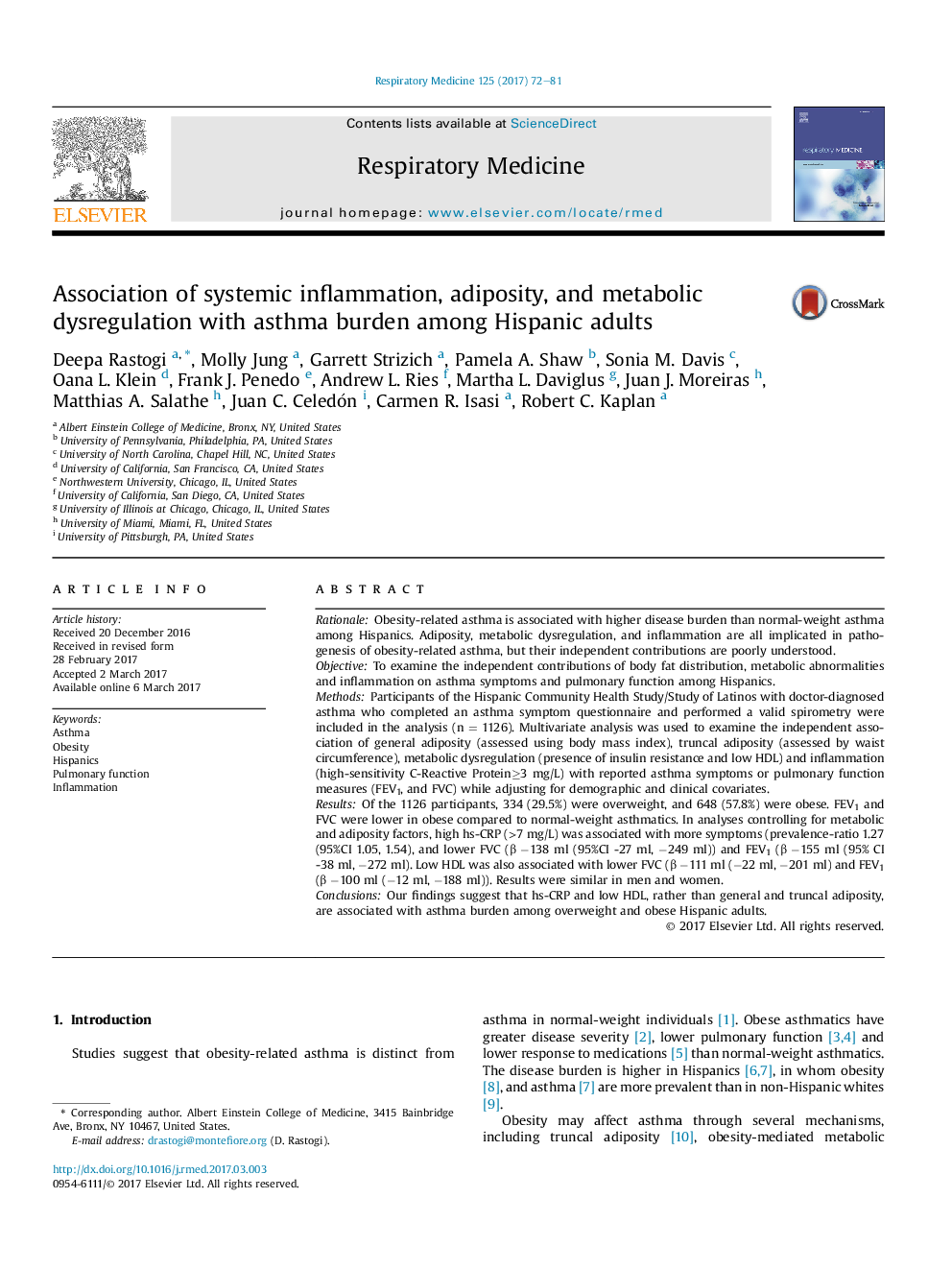| Article ID | Journal | Published Year | Pages | File Type |
|---|---|---|---|---|
| 5724827 | Respiratory Medicine | 2017 | 10 Pages |
RationaleObesity-related asthma is associated with higher disease burden than normal-weight asthma among Hispanics. Adiposity, metabolic dysregulation, and inflammation are all implicated in pathogenesis of obesity-related asthma, but their independent contributions are poorly understood.ObjectiveTo examine the independent contributions of body fat distribution, metabolic abnormalities and inflammation on asthma symptoms and pulmonary function among Hispanics.MethodsParticipants of the Hispanic Community Health Study/Study of Latinos with doctor-diagnosed asthma who completed an asthma symptom questionnaire and performed a valid spirometry were included in the analysis (n = 1126). Multivariate analysis was used to examine the independent association of general adiposity (assessed using body mass index), truncal adiposity (assessed by waist circumference), metabolic dysregulation (presence of insulin resistance and low HDL) and inflammation (high-sensitivity C-Reactive Proteinâ¥3 mg/L) with reported asthma symptoms or pulmonary function measures (FEV1, and FVC) while adjusting for demographic and clinical covariates.ResultsOf the 1126 participants, 334 (29.5%) were overweight, and 648 (57.8%) were obese. FEV1 and FVC were lower in obese compared to normal-weight asthmatics. In analyses controlling for metabolic and adiposity factors, high hs-CRP (>7 mg/L) was associated with more symptoms (prevalence-ratio 1.27 (95%CI 1.05, 1.54), and lower FVC (β â138 ml (95%CI -27 ml, â249 ml)) and FEV1 (β â155 ml (95% CI -38 ml, â272 ml). Low HDL was also associated with lower FVC (β â111 ml (â22 ml, â201 ml) and FEV1 (β â100 ml (â12 ml, â188 ml)). Results were similar in men and women.ConclusionsOur findings suggest that hs-CRP and low HDL, rather than general and truncal adiposity, are associated with asthma burden among overweight and obese Hispanic adults.
